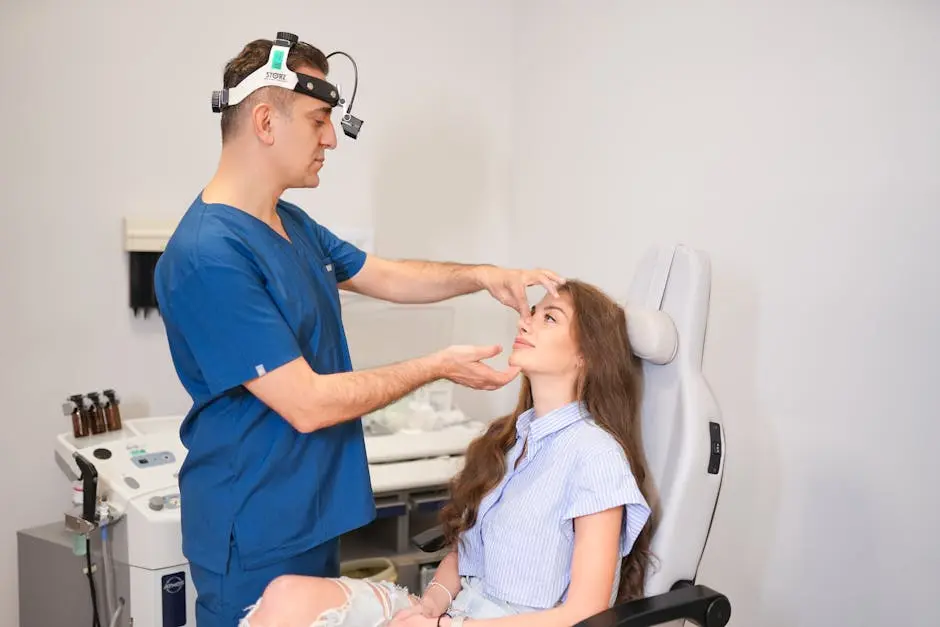In the world of rhinoplasty, the supratip break is a term you might hear often. It’s a specific part of the nose that can significantly influence the overall aesthetic outcome of the procedure. But what exactly does it mean and why is it crucial? In this article, we’ll explore the concept in detail, breaking it down into easily digestible segments.
What is a Supratip Break?
The supratip break refers to a subtle dip or angle just above the tip of the nose. This feature is crucial for balance and overall nasal aesthetics.
In many cases, the supratip break determines how the nose appears in profile. It functions to bridge the area between the nasal tip and the dorsum, or the upper part of the nose, contributing to a natural flow.
If this break is too pronounced or absent, it can lead to an unattractive nasal appearance that may not align with the patient’s facial proportions. Hence, this feature is key to the artistry of rhinoplasty.
It’s important to understand that the supratip break is not merely anatomical; it’s also a facial aesthetic element that influences the perception of attractiveness. Every face is different, and as such, the ideal supratip break varies from person to person.
Why is the Supratip Break Important?
The supratip break plays a significant role in creating a harmonious nasal profile. A well-defined supratip break can enhance the perceived beauty of the nose.
A visually pleasing supratip break adds character and dimensionality to the nose, balancing features such as the chin and brow. These relationships are what give rise to an aesthetically balanced face.
Additionally, this area can affect how light interacts with the nose, casting shadows that can either highlight or detract from a person’s features. A well-shaped supratip break helps create flattering contours.
Some might wonder why a small feature could hold so much importance. The supratip break encapsulates a lot of nuance; even minor adjustments can result in significant changes to the overall appearance of the face.
How Does it Affect Rhinoplasty Outcomes?
Surgeons must consider the supratip break during rhinoplasty to ensure the results align with the patient’s desires and facial features.
The positioning and definition of the supratip break inform the surgical approach. If a surgeon fails to properly address this feature, the end result may appear unbalanced.
Moreover, there is a strong educational component involved; patients need to understand the implications of their choices in relation to the supratip break. This empowers them to make informed decisions in consultation with their surgeons.
After all, rhinoplasty is not just a matter of reshaping the nose. It requires a deep understanding of how every element, including the supratip break, interacts to produce an aesthetically pleasing result. Therefore, its significance can’t be overstated.
Consulting with Your Surgeon about the Supratip Break
Discussing your understanding and expectations regarding the supratip break with your surgeon is essential for achieving your desired results.
During your consultation, don’t hesitate to ask your surgeon about how they plan to address your supratip break. It’s perfectly understandable to want clarity on this crucial aspect of your procedure.
A thorough discussion about the supratip break can illuminate the surgical techniques that will be employed, whether reshaping, augmenting, or reducing the area. This transparency builds trust between you and your surgeon.
Ultimately, approaching rhinoplasty with an understanding of the supratip break will enable you to express your goals more clearly, leading to a more satisfying outcome—and that’s what every patient deserves.
Wrapping Up the Importance of Supratip Break in Rhinoplasty
Understanding the supratip break is essential for anyone considering rhinoplasty. It’s not just a medical term; it directly impacts the shape and beauty of your nose post-surgery. By grasping its importance, you can have a more informed discussion with your surgeon and set realistic expectations for your rhinoplasty journey.


